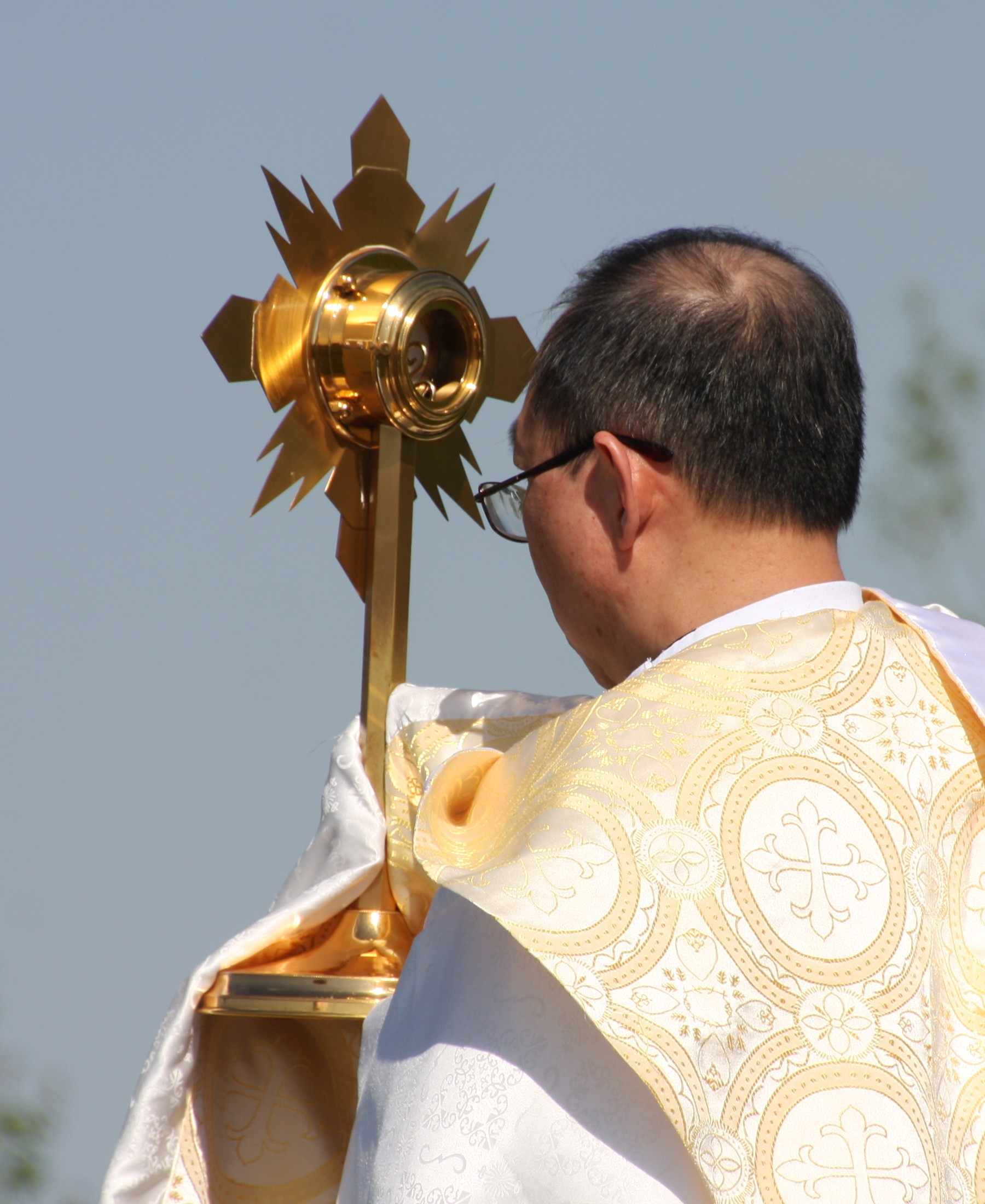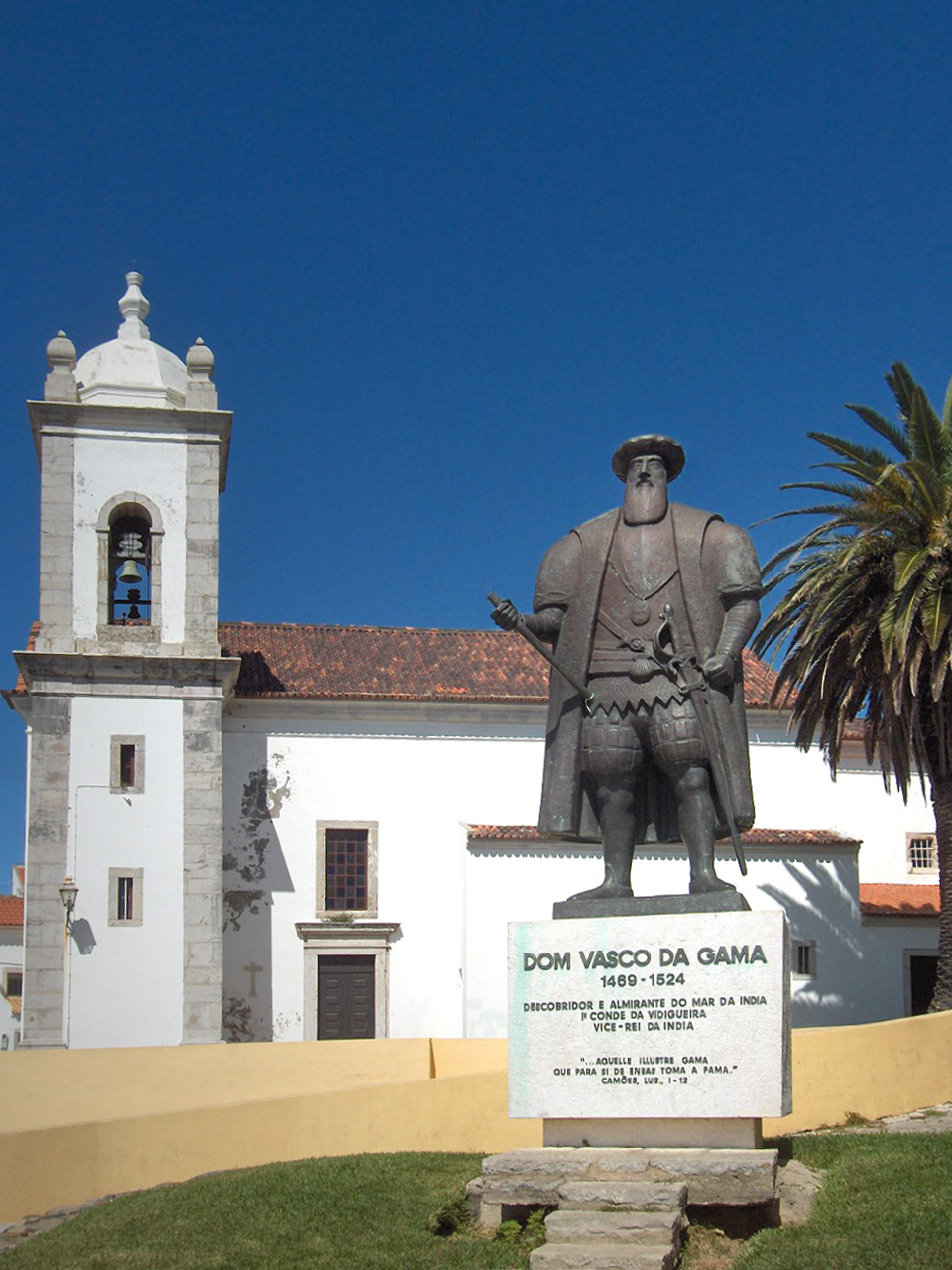|
Belém Monstrance
The Belém Monstrance () is a significant monstrance made of gold and polychrome enamels. It is probably the most famous work by a Portuguese goldsmith, and is much-admired for its historical importance and artistic merit. It is dated 1506 and attributed to the Portuguese goldsmith and playwright Gil Vicente, on a commission by King Manuel I for the Royal Chapel, and later left in the King's will to the Jerónimos Monastery in Belém, at the time an outskirt of Lisbon, whence it derives its name. It is currently part of the collection of the National Museum of Ancient Art, in Lisbon. Crafted in late Gothic style, it was fashioned of "1,500 mithqals of gold" brought from Vasco da Gama's second trip to India in 1502 as a tribute from the petty king (''régulo'') of Kilwa (in present-day Tanzania), a sign of vassalage A vassal or liege subject is a person regarded as having a mutual obligation to a lord or monarch, in the context of the feudal system in medieval Europe. Whi ... [...More Info...] [...Related Items...] OR: [Wikipedia] [Google] [Baidu] |
Mithqal
Mithqāl () is a unit of mass equal to which is mostly used for measuring precious metals, such as gold, and other commodities, like saffron. The name was also applied as an alternative term for the gold dinar, a coin that was used throughout much of the Islamic world from the 8th century onward and survived in parts of Africa until the 19th century. The name of Mozambique's currency since 1980, the '' metical'', is derived from ''mithqāl''. Etymology The word ''mithqāl'' (; “weight, unit of weight”) comes from the Arabic ''thaqala'' (), meaning “to weigh” (cf. ). Other variants of the unit in English include ''miskal'' (from Persian or Urdu ; ''misqāl''), ''mithkal, mitkal'' and ''mitqal.'' Indian mithqaal In India, the measurement is known as ''mithqaal''. It contains 4 and 3½ (rata'ii; مثقال). It is equivalent to 4.25 grams when measuring gold, or 4.5 grams when measuring commodities. It may be more or less than this. Nikki mithqal A gold ... [...More Info...] [...Related Items...] OR: [Wikipedia] [Google] [Baidu] |
Monstrances
A monstrance, also known as an ostensorium (or an ostensory), is a vessel used in Roman Catholic, Old Catholic, High Church Lutheran and Anglican churches for the display on an altar of some object of piety, such as the consecrated Eucharistic Sacramental bread (host) during Eucharistic adoration or during the Benediction of the Blessed Sacrament. A monstrance may also serve as a reliquary for the public display of relics of some saints."" New Advent Catholic Encyclopedia. Retrieved on 2014-11-16. The word ''monstrance'' comes from the word , while the word ''ostensorium'' comes from the Latin word . Either term, each expressing the concept of "showing", can refer to a vessel intended for the exposition of the |
Vassal State
A vassal state is any state that has a mutual obligation to a superior state or empire, in a status similar to that of a vassal in the feudal system in medieval Europe. Vassal states were common among the empires of the Near East, dating back to the era of the Egyptian, Hittite, and Mitanni conflict, as well as in ancient China. The relationships between vassal rulers and empires were dependent on the policies and agreements of each empire. While the payment of tribute and military service was common amongst vassal states, the degree of independence and benefits given to vassal states varied. Today, more common terms are puppet state, protectorate, client state, associated state, or satellite state. Historical examples Ancient Egypt The reign of Thutmose III (1479 BC – 1425 BC) laid the foundations for the systems that functioned during the Amarna period of Egypt. Vassal states in the Levant became fully integrated in Egypt's economy with the construction of harbours � ... [...More Info...] [...Related Items...] OR: [Wikipedia] [Google] [Baidu] |
Tanzania
Tanzania, officially the United Republic of Tanzania, is a country in East Africa within the African Great Lakes region. It is bordered by Uganda to the northwest; Kenya to the northeast; the Indian Ocean to the east; Mozambique and Malawi to the south; Zambia to the southwest; and Rwanda, Burundi, and the Democratic Republic of the Congo to the west. According to a 2024 estimate, Tanzania has a population of around 67.5 million, making it the most populous country located entirely south of the equator. Many important hominid fossils have been found in Tanzania. In the Stone and Bronze Age, prehistoric migrations into Tanzania included South Cushitic languages, Southern Cushitic speakers similar to modern day Iraqw people who moved south from present-day Ethiopia; Eastern Cushitic people who moved into Tanzania from north of Lake Turkana about 2,000 and 4,000 years ago; and the Southern Nilotic languages, Southern Nilotes, including the Datooga people, Datoog, who originated fro ... [...More Info...] [...Related Items...] OR: [Wikipedia] [Google] [Baidu] |
Kilwa Kisiwani
Kilwa Kisiwani ('Kilwa Island') is an island, national historic site, and hamlet community located in the township of Kilwa Masoko, the district seat of Kilwa District in the Tanzanian region of Lindi in southern Tanzania. Kilwa Kisiwani is the largest of the nine hamlets in the town of Kilwa Masoko and is also the least populated hamlet in the township with around 1,150 residents. At its peak in the Middle Ages, Kilwa had over 10,000 inhabitants. Since 1981, the entire island of Kilwa Kisiwani has been designated by UNESCO as a World Heritage Site along with the nearby ruins of Songo Mnara. Despite its significant historic reputation, Kilwa Kisiwani is still home to a small and resilient community of natives who have inhabited the island for centuries. Kilwa Kisiwani is one of the seven World Heritage Sites in Tanzania. Additionally, the site is a registered National Historic Site of Tanzania. Geography Kilwa Kisiwani Island lies 9 degrees south of the equator. The islan ... [...More Info...] [...Related Items...] OR: [Wikipedia] [Google] [Baidu] |
Petty Kingdom
A petty kingdom is a kingdom described as minor or "petty" (from the French 'petit' meaning small) by contrast to an empire or unified kingdom that either preceded or succeeded it (e.g. the numerous kingdoms of Anglo-Saxon England unified into the Kingdom of England in the 10th century, or the numerous Gaelic kingdoms of Ireland as the Kingdom of Ireland in the 16th century). Alternatively, a petty kingdom would be a minor kingdom in the immediate vicinity of larger kingdoms, such as the medieval Kingdom of Mann and the Isles relative to the kingdoms of Scotland or England or the Viking kingdoms of Scandinavia. In the parallel mainland Southeast Asian political model, petty kingdoms were known as ''mueang''. By the European High Middle Ages, many post-Roman Early Middle Ages petty kingdoms had evolved into principalities, grand duchies, or duchies. By the European Early Modern era, many of these principalities had been mediatized into larger monarchies, but the ruling fa ... [...More Info...] [...Related Items...] OR: [Wikipedia] [Google] [Baidu] |
4th Portuguese India Armada (Gama, 1502)
The 4th Portuguese India Armada was a Portuguese fleet that sailed from Lisbon in February, 1502. Assembled on the order of King Manuel I of Portugal and placed under the command of Vasco da Gama, it was the fourth of some thirteen Portuguese India Armadas, was Gama's second trip to India, and was designed as a punitive expedition targeting Calicut to avenge the numerous defeats of the 2nd Armada two years earlier. Along the way, in East Africa, the 4th Armada established a Portuguese factory in present-day Mozambique, made contact and opened trade with the gold entrepot of Sofala and extorted tribute from Kilwa. Once in India, the armada set about attacking Calicut shipping and disrupting trade along much of the Malabar Coast. But the ruling Zamorin of Calicut refused to accede to Portuguese demands, arguing that the violent exactions of the armada exceeded any claims they might have for compensation. The 4th Armada left without bringing the Zamorin to terms and leaving matter ... [...More Info...] [...Related Items...] OR: [Wikipedia] [Google] [Baidu] |
Vasco Da Gama
Vasco da Gama ( , ; – 24 December 1524), was a Portuguese explorer and nobleman who was the Portuguese discovery of the sea route to India, first European to reach India by sea. Da Gama's first voyage (1497–1499) was the first to link Europe and Asia using an Cape Route, ocean route that rounded the southern tip of Africa. This route allowed the Portuguese to avoid sailing across the highly disputed Mediterranean Sea and traversing the dangerous Arabian Peninsula, Arabian Peninsula. A milestone in Portuguese maritime exploration, this voyage marked the beginning of a sea-based phase of international trade and an age of global imperialism. The Portuguese later established a Portuguese Empire, long-lasting colonial empire along the route from Africa to Asia. The outward and return voyages constituted the longest known ocean voyages ever completed. Sailors had been trying to reach the Indies for decades, with thousands of lives and dozens of vessels lost in shipwrecks and ... [...More Info...] [...Related Items...] OR: [Wikipedia] [Google] [Baidu] |
International Gothic
International Gothic is a period of Gothic art that began in Burgundy, France, and northern Italy in the late 14th and early 15th century. It then spread very widely across Western Europe, hence the name for the period, which was introduced by the French art historian Louis Courajod at the end of the 19th century. The spread of ideas and portable works, such as illuminated manuscripts throughout Europe led to consensus among artists and their patrons that considerably reduced variation in national styles. The main influences were northern France, the Duchy of Burgundy, Flanders and Brabant, the Imperial court in Prague, and Italy. Royal marriages such as that between Richard II of England and Anne of Bohemia helped to spread the style. It was initially a style of courtly sophistication, but somewhat more robust versions spread to art commissioned by the emerging mercantile classes and the smaller nobility. In Northern Europe "Late Gothic" continuations of the style, especially ... [...More Info...] [...Related Items...] OR: [Wikipedia] [Google] [Baidu] |
Monstrance
A monstrance, also known as an ostensorium (or an ostensory), is a vessel used in Roman Catholic, Old Catholic, High Church Lutheran and Anglican churches for the display on an altar of some object of piety, such as the consecrated Eucharistic Sacramental bread (host) during Eucharistic adoration or during the Benediction of the Blessed Sacrament. A monstrance may also serve as a reliquary for the public display of relics of some saints."" New Advent Catholic Encyclopedia. Retrieved on 2014-11-16. The word ''monstrance'' comes from the word , while the word ''ostensorium'' comes from the Latin word . Either term, each expressing the concept of "showing", can refer to a vessel intended for the exposition of the < ... [...More Info...] [...Related Items...] OR: [Wikipedia] [Google] [Baidu] |
National Museum Of Ancient Art
The Museu Nacional de Arte Antiga (; MNAA), also known in English as the National Museum of Ancient Art, is a Portugal, Portuguese national art museum located in Lisbon. With over 40,000 items spanning a vast collection of painting, sculpture, goldware, furniture, textiles, ceramics, and prints, MNAA is one of the most visited museums in Portugal. The MNAA was founded in 1884 to display the collections of the House of Braganza, Portuguese royal family and the :pt:Academia Nacional de Belas-Artes, National Academy of Fine Arts. It is housed in the ''Palácio Alvor-Pombal'', a former residence of the Sebastião José de Carvalho e Melo, 1st Marquis of Pombal which was expanded when it was converted into a museum. The museum's collection spans more than a millennium of art from Europe, Asia, Africa, and the Americas and includes notable artworks by Hieronymus Bosch, Raphael, Hans Holbein the Elder, Francisco de Zurbarán, Albrecht Dürer, Domingos Sequeira, and Giovanni Battista Tiepo ... [...More Info...] [...Related Items...] OR: [Wikipedia] [Google] [Baidu] |






